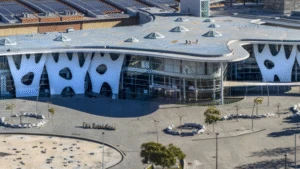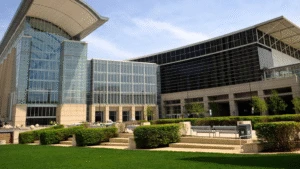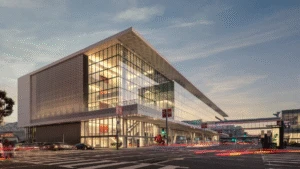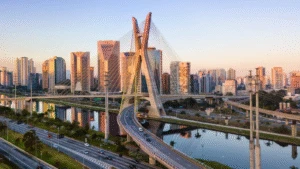Whether you’re a small business owner, a remote-first professional, or an eco-conscious traveler, the way we approach work-related journeys is fundamentally evolving. Hybrid business travel, blending in-person meetings, virtual collaboration, and flexible schedules, is swiftly redefining the rhythm and overall impact of corporate trips.
This new paradigm offers a smarter way to move, focusing on intentionality and efficiency. It presents a unique opportunity to enhance productivity, reduce stress, and lighten your environmental footprint during professional engagements.
This article unpacks essential strategies to streamline your work trips, support local communities, and navigate diverse urban environments, from bustling metropolises like New York to global business hubs, all with greater purpose and less hassle.
What Does Hybrid Business Travel Actually Mean for Your Work Life?
Hybrid business travel represents a fundamental shift from the old “road warrior” mentality to something more strategic and sustainable. Instead of defaulting to in-person meetings, businesses now carefully consider when physical presence adds real value—think team strategy sessions, complex negotiations, or relationship-building with key clients.
For employees, this evolution means trading the exhaustion of constant travel for more control over when and why they hit the road. A marketing director might attend one transformative industry conference per quarter rather than six routine check-ins. A consultant could fly to London for a crucial client presentation, then handle the project updates via video calls from their home office.
Companies benefit from reduced travel expenses and lower carbon emissions, while employees experience less burnout and more flexibility. The result? Each trip becomes more intentional, more valuable, and often more enjoyable. When travel serves a clear purpose, both productivity and job satisfaction tend to increase.
This shift also opens doors for “bleisure” travel—extending business trips to explore local culture or simply decompress. Progressive employers increasingly support this practice, recognizing that well-rested, inspired employees perform better than exhausted ones.
Deciding When to Meet In-Person Versus Online
The art of hybrid business travel lies in knowing when to board that plane and when to open your laptop instead. Smart travelers and companies develop clear criteria for making these decisions, moving beyond gut instinct to strategic thinking.
High-stakes situations typically warrant in-person meetings: launching a new partnership, resolving complex conflicts, or building trust with new team members. The nuanced communication that happens through body language, shared meals, and informal conversations often makes these trips worthwhile investments.
Virtual meetings excel for routine updates, presentations with clear deliverables, and follow-up discussions. They’re also ideal when time zones align well or when participants need to reference documents extensively. A quarterly business review might happen online, while the annual strategic planning retreat requires everyone in the same room.
Geography matters too. If multiple stakeholders are scattered across different continents, virtual collaboration might serve everyone better than forcing people to converge in one location. But when most participants are clustered in a particular region—whether that’s Silicon Valley, London’s financial district, or Singapore’s business hub—traveling there could create more meaningful connections.
Consider the environmental and financial costs alongside the potential benefits. A transcontinental flight for a two-hour meeting rarely makes sense, but a train journey through Europe to spend two days building relationships with key clients often does.
Technology Tools for Effective Hybrid Travel
The technology backbone of successful hybrid business travel extends far beyond video conferencing. Modern travelers need integrated systems that keep them connected, organized, and efficient whether they’re in their home office or a hotel room in another time zone.

Travel management platforms like Concur, Egencia, and Navan streamline the booking process while ensuring policy compliance and expense tracking. These tools integrate with calendar systems, automatically updating itineraries and sharing travel details with assistants or travel managers. The best platforms also track sustainability metrics, helping companies monitor their carbon footprint across all business travel.
Collaboration software becomes crucial when part of your team joins virtually while others gather in person. Zoom, Microsoft Teams, and Slack now offer features specifically designed for hybrid meetings, including spatial audio that makes remote participants feel more present and AI-powered transcription that captures key decisions for later reference.
Mobile productivity apps keep travelers agile. Flight tracking apps provide real-time updates and rebooking options, while local transportation apps help navigate unfamiliar cities efficiently. Whether you’re using Citymapper in London or Transit in Montreal, these tools reduce the stress of moving through new places.
Cloud-based document sharing ensures everyone accesses the latest version of presentations or contracts, regardless of location. Password managers and VPNs maintain security standards while connecting to various networks during travel.
Hybrid Work’s Impact on Business Travel’s Rhythm
The frequency and purpose of business trips have shifted dramatically as hybrid work models mature. Where companies once sent employees on frequent, routine trips, they now invest in fewer, more strategic journeys designed to maximize relationship-building and collaboration.
This change reflects a deeper understanding of what in-person interaction actually accomplishes. Routine status updates, project reviews, and informational presentations happen efficiently online. But creative brainstorming, team bonding, complex problem-solving, and relationship cultivation still benefit enormously from shared physical space.
The result is higher-quality travel experiences. Instead of rushing through back-to-back meetings in Chicago one day and Denver the next, travelers can invest time in deeper conversations, explore local culture, and return home genuinely energized rather than exhausted. A software team might gather quarterly for intensive planning sessions in Austin, using the time between trips for focused virtual collaboration.
Companies report higher return on investment for their travel spending, as each trip serves multiple purposes and creates lasting value. Employees appreciate having more control over their schedules and the opportunity to make business travel feel less transactional and more transformative.
This evolution also supports better work-life integration. When business trips are less frequent but more meaningful, employees can plan personal time around them more effectively, sometimes extending stays to explore destinations or visit friends and family.
Staying Productive and Healthy While Traveling
Balancing productivity with well-being during business travel requires intentional planning and clear boundaries. The most successful hybrid travelers treat their trips as opportunities for both professional achievement and personal renewal.
Smart itinerary planning starts with realistic expectations. Build buffer time between meetings, allowing for traffic delays, meaningful conversations, and simply processing the day’s interactions. Choose accommodations within walking distance of meeting locations or near reliable public transportation to minimize commute stress.
Sleep quality becomes non-negotiable for maintaining performance. Research your hotel’s noise levels, room amenities, and blackout capabilities before booking. Many travelers pack white noise machines, eye masks, and familiar comfort items to recreate their home sleep environment, whether they’re staying in Tokyo or Toronto.
Nutrition significantly impacts energy levels and decision-making capacity. Seek out accommodations that offer healthy breakfast options or keep nutritious snacks on hand. When dining out, look for restaurants that accommodate dietary preferences and source ingredients locally—often a sign of fresher, more nutritious meals.
Physical activity helps manage travel stress and jet lag. Choose hotels with fitness centers or research nearby parks for morning runs. Walking meetings, when appropriate, combine networking with exercise and often lead to more creative conversations than sitting in conference rooms.
Setting communication boundaries protects your mental space. Establish specific times for checking emails and returning calls, then disconnect during meals, exercise, or exploration time. Use “do not disturb” settings strategically to create space for rest and reflection.
Making Hybrid Business Travel Work for Your Values and Your Business
Hybrid business travel represents more than a response to remote work trends—it’s an opportunity to align professional responsibilities with personal values while often achieving better business outcomes. The most successful practitioners approach each trip as an investment in relationships, creativity, and sustainable practices.
Companies that embrace this model thoughtfully often discover that strategic, purposeful travel creates stronger team bonds and more meaningful client relationships than frequent, routine trips. Employees appreciate having more control over their schedules and the opportunity to make business travel feel enriching rather than exhausting.
The environmental benefits accumulate over time, as reduced flight frequency and sustainable accommodation choices contribute to measurably lower carbon footprints. Supporting local businesses, choosing green transportation, and eating sustainably during travel creates positive economic impact in destination communities worldwide.
Personal well-being improves when business travel serves clear purposes and includes time for rest, exploration, and genuine connection. Travelers who balance productivity with self-care often return home more energized and creative than those who pack every moment with meetings.
Ready to plan your next sustainable business trip? Research sustainable accommodations and local transportation options in your destination city, and consider extending your stay to explore local culture while reducing the frequency of future trips.






